Galleries
Adrián Villar Rojas Debuts Giant Sleeping David at Marian Goodman Gallery
Michelangelo's David appealed to Rojas in part because of its longevity.
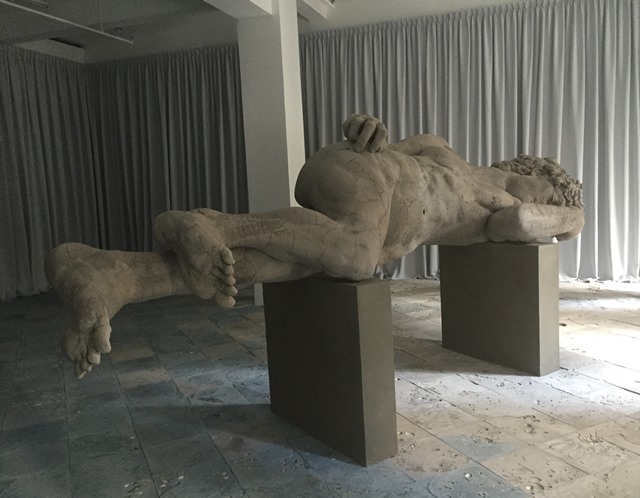
Photo by Brian Boucher.
Michelangelo's David appealed to Rojas in part because of its longevity.

Brian Boucher

“You can talk normally,” artist Adrián Villar Rojas told me this morning at Marian Goodman Gallery, “although I love the whispering.”
We were standing in the darkened south chamber of Goodman’s large two-room gallery in midtown Manhattan. The walls were covered with slate-gray curtains that pooled slightly at the floor and partly covered the windows; the lack of electric lights created the dim, hushed atmosphere that inspired visitors to keep their voices low.
Entering from the elevator, visitors to the gallery find themselves in a completely empty, twilight space with a floor covered in cement tiles that seem the worse for wear. Some are black, some white, some gray, appearing as if they’d been laid down piecemeal. A few steps in and you’ll find that the tiles aren’t secured, so they slightly shift with each step. Look a little closer to see various objects embedded in the tiles—seashells, iPods, a bicycle tire.
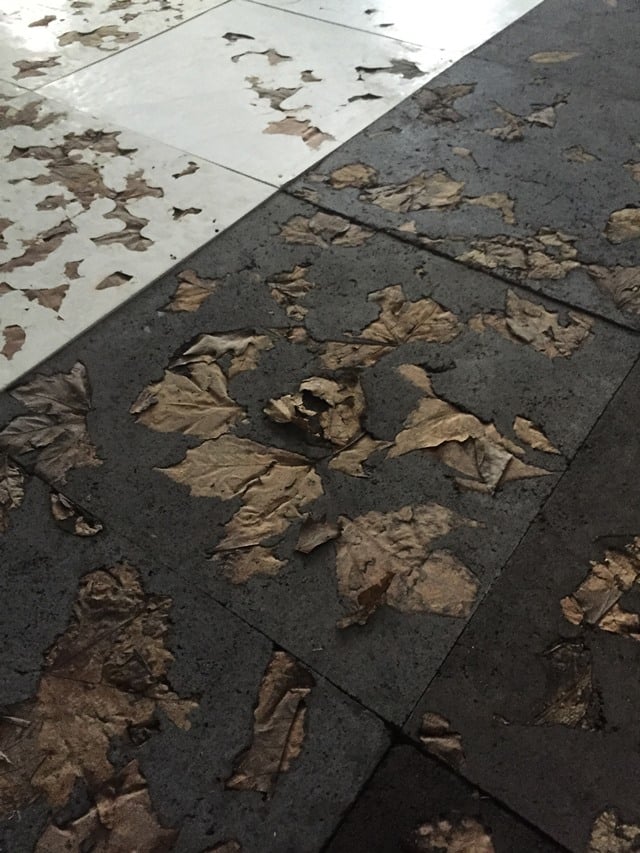
A detail of floor tiles at Adrián Villar Rojas’s exhibition “Two Suns” at Marian Goodman Gallery, New York.
Photo: Brian Boucher.
Even more unlikely, there are leaves and butterfly wings lodged in the cement tiles, all of which were created by hand. Rojas often talks about imagining the last artwork created by a dying human race, and the floor suggests a time beyond mankind’s destructive tenure, when an iPod becomes a fossil.
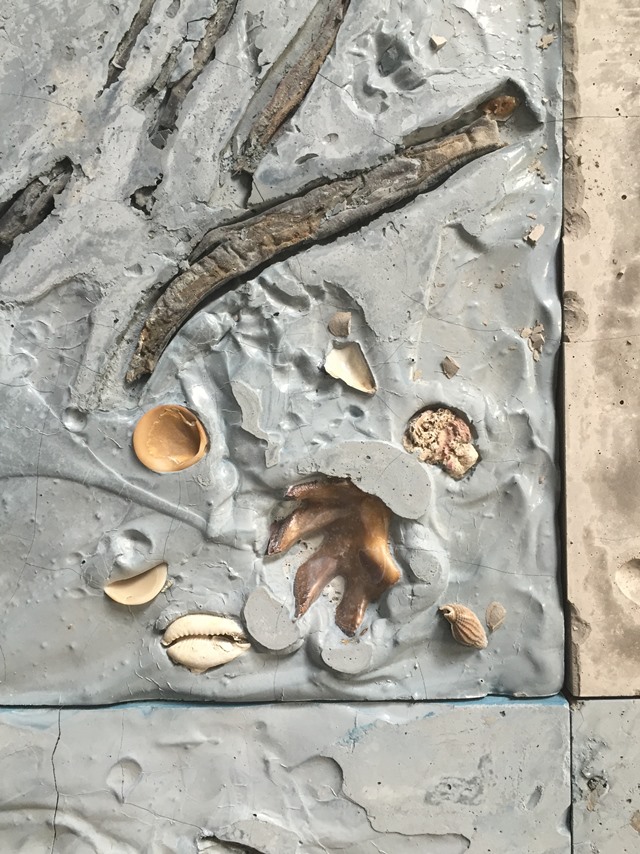
A detail of floor tiles at Adrián Villar Rojas’s exhibition “Two Suns” at Marian Goodman Gallery, New York.
Photo: Brian Boucher.
The long corridor between the gallery’s two rooms is similarly lined with curtains, and since all electric lights are off for the duration of the exhibition, it takes a bit for the eyes to adjust. As you emerge into the south gallery, the star of the show comes into view: a full-size clay-and-cement replica of Michelangelo’s 17-foot-high sculpture David, lying on his side, propped up on two supports about four feet high.
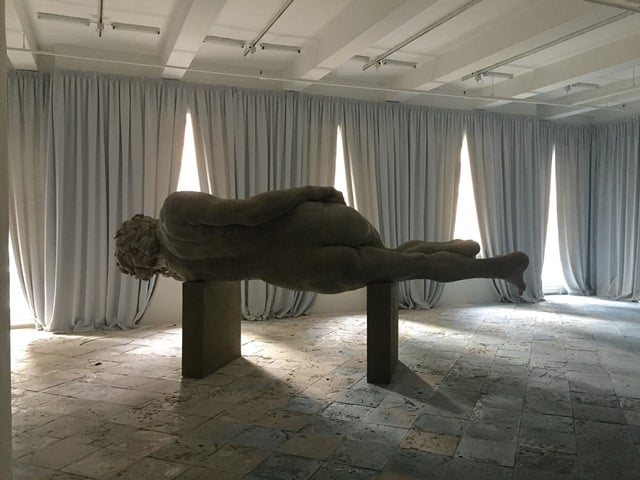
Installation shot at Adrián Villar Rojas’s exhibition “Two Suns” at Marian Goodman Gallery, New York.
Photo: Brian Boucher.
David’s full-bodied backside faces the viewer, and he looks toward a wall with several windows that have never been exposed before; they’ve always been walled over. The show’s title, “Two Suns,” derives from the two sources of natural light, one from the windows to the south, one from those to the north, that are the show’s only illumination.
Somehow David is recognizable even from behind, although his pose is slightly modified from the original. As you come around to his front, you see that his alert gaze has given way; his eyes are closed, as if the Biblical slingman had fallen asleep on his way to slay Goliath.
Rojas’ choice of the classic sculpture was intentionally perverse, he explained. “I thought, ‘How can I get into trouble?’ Messing with David is a potential huge mistake.”
And mess with David he has. Besides giving way from erect to horizontal, watchful to dozing, David’s masculine majesty is further compromised. Rather than being confidently spread, his legs turn inward in a seeming gesture of modesty. His genitals are tucked away, such that you have to look closely to even be sure that they’re there. In that, Rojas’ David alludes to the ancient sculpture Sleeping Hermaphroditus, which Gian Lorenzo Bernini famously provided a mattress for in 1620.
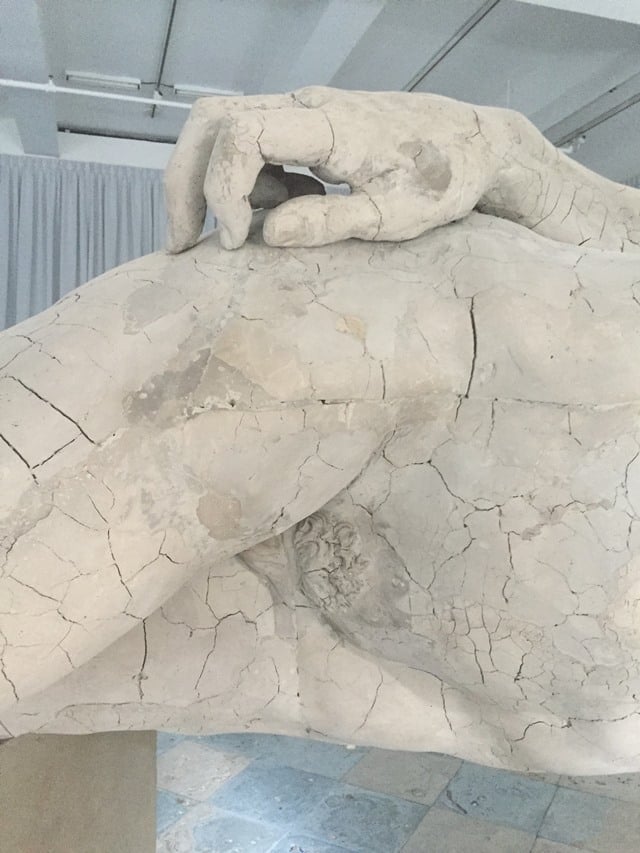
A detail of a sculpture at Adrián Villar Rojas’s exhibition “Two Suns” at Marian Goodman Gallery, New York.
Photo: Brian Boucher.
Rojas had never actually set eyes on David before creating the sculpture, he confessed. “None of us had ever seen it,” he said, referring to the team of artists—he calls them collaborators—who work for him. “We did it with our tools, our means—books, Internet images.” He happened to make his way to Florence to see the colossus, he said, but only in late 2014, when the sculpture was already completed.
Finishing a work so far ahead of a show’s opening is atypical for the artist, who is proud to say he has no studio (though he rented a temporary space to create this show), and works “nomadically” on his massive, site-specific sculptural projects. These have included a bestiary afloat in the Bosphorous for the current Istanbul Biennial; a life-size blue whale in the woods outside Ushuaia, Argentina; and a number of sculptures along New York’s High Line elevated park.
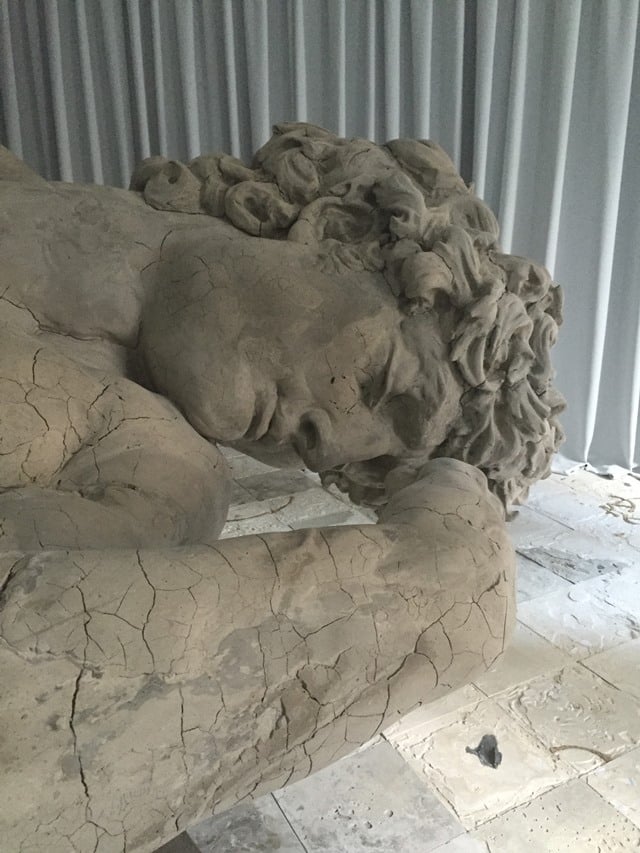
A detail of a sculpture at Adrián Villar Rojas’s exhibition “Two Suns” at Marian Goodman Gallery, New York.
Photo: Brian Boucher.
Rojas’ works typically involve unfired clay that is meant to decay over time, so that the sculptures eventually collapse. Michelangelo’s massive work in marble appealed to Rojas in part precisely because of its longevity. “These iconic artworks have been stable so long,” he said, “that they offer some sort of confirmation of your own existence.”
Related stories:
Carolyn Christov-Bakargiev’s Istanbul Biennial Makes Political Statements With Outstanding Art
Adrián Villar Rojas Goes Wild on the High Line
Adrián Villar Rojas Wins Canson Paper Prize at Paris’ Palais de Tokyo